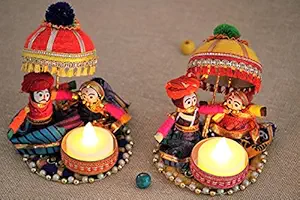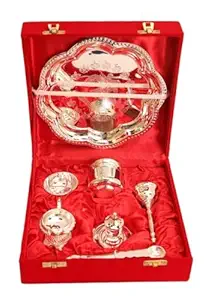महाकुंभ मेला हर 12 साल में क्यों मनाया जाता है?
महाकुंभ मेला, दुनिया के सबसे बड़े आध्यात्मिक समागमों में से एक है, जिसे हर 12 साल में बड़ी श्रद्धा और भक्ति के साथ मनाया जाता है। यह आवधिकता मनमाना नहीं है, बल्कि भारत की लौकिक, पौराणिक और ज्योतिषीय परंपराओं में गहराई से निहित है। आइए जानें कि महाकुंभ मेला हर 12 साल में क्यों मनाया जाता है और भारत के आध्यात्मिक और सांस्कृतिक ताने-बाने में इसका क्या महत्व है।
ज्योतिषीय आधार
महाकुंभ मेले का 12 साल का चक्र आकाशीय पिंडों के संरेखण, विशेष रूप से बृहस्पति ग्रह की चाल से संचालित होता है। वैदिक ज्योतिष के अनुसार, यह त्यौहार तब होता है जब बृहस्पति कुंभ राशि (कुंभ राशि) में प्रवेश करता है और सूर्य मेष राशि (मेष राशि) में प्रवेश करता है। माना जाता है कि यह दुर्लभ संरेखण एक अत्यधिक शुभ अवधि बनाता है, जिसके दौरान कुंभ स्थलों पर नदियाँ दैवीय गुणों से भर जाती हैं।
देवताओं के गुरु और ज्ञान के ग्रह माने जाने वाले बृहस्पति हिंदू ब्रह्मांड विज्ञान में एक महत्वपूर्ण भूमिका निभाते हैं। सूर्य के चारों ओर इसकी 12 साल की परिक्रमा अवधि महाकुंभ मेले के 12 साल के चक्र का आधार बनती है। इस समय के दौरान आकाशीय ऊर्जाओं का संगम आध्यात्मिक विकास और शुद्धि को बढ़ाने वाला माना जाता है, जो इसे कुंभ मेले के लिए आदर्श अवधि बनाता है।
पौराणिक महत्व
महाकुंभ मेले के 12 वर्षीय चक्र की उत्पत्ति समुद्र मंथन (समुद्र मंथन) की किंवदंती से जुड़ी हुई है। हिंदू पौराणिक कथाओं के अनुसार, देवताओं (देवों) और राक्षसों (असुरों) ने अमरता का अमृत (अमृत) निकालने के लिए ब्रह्मांडीय महासागर का मंथन किया था। एक बार जब अमृत निकला, तो उसके कब्जे को लेकर भयंकर युद्ध हुआ।
12 दिव्य दिनों (मानव के 12 वर्षों के बराबर) के दौरान, भगवान विष्णु ने अपने विभिन्न रूपों में यह सुनिश्चित किया कि अमृत सुरक्षित रहे। अमृत की बूँदें पृथ्वी पर चार स्थानों पर गिरी: प्रयागराज, हरिद्वार, उज्जैन और नासिक। ये स्थल पवित्र हो गए, और कुंभ मेला 12 साल के चक्र में उनमें से प्रत्येक पर मनाया जाता है, जिसमें महाकुंभ विशेष रूप से प्रयागराज में होता है।
12 वर्ष की अवधि दिव्य समय पैमाने का प्रतीक है। यह ब्रह्मांडीय लय के महत्व और मानव जीवन पर उनके प्रभाव पर जोर देता है, आकाशीय और स्थलीय के बीच संबंध को मजबूत करता है।
पवित्र भूगोल की भूमिका
कुंभ मेले के स्थलों का चयन उनके आध्यात्मिक और भौगोलिक महत्व से गहराई से जुड़ा हुआ है। प्रत्येक स्थान उन स्थानों में से एक से मेल खाता है जहाँ अमरता का अमृत गिरा था। प्रयागराज, जहाँ महाकुंभ मेला आयोजित किया जाता है, विशेष रूप से महत्वपूर्ण है क्योंकि यह त्रिवेणी संगम है, गंगा, यमुना और पौराणिक सरस्वती नदियों का संगम है। इस संगम को सबसे पवित्र बिंदु माना जाता है, माना जाता है कि यह कुंभ के दौरान जल की शुद्ध करने वाली शक्ति को बढ़ाता है।
12 साल का अंतराल आयोजन की पवित्र प्रकृति को दर्शाता है, जिससे तैयारी, तीर्थयात्रा और आध्यात्मिक प्रथाओं के नवीनीकरण के लिए समय मिलता है। यह ब्रह्मांडीय चक्रों के साथ भी संरेखित होता है, यह सुनिश्चित करता है कि त्योहार प्राकृतिक और दिव्य व्यवस्था के साथ सामंजस्य में रहे।
संख्या 12 का प्रतीकवाद
हिंदू दर्शन में, संख्या 12 का आध्यात्मिक और लौकिक महत्व बहुत अधिक है:
राशि चक्र: 12 राशियाँ आकाशीय क्षेत्र में सूर्य की संपूर्ण यात्रा का प्रतिनिधित्व करती हैं।
समय चक्र: एक वर्ष को 12 महीनों में विभाजित किया जाता है, जो समय की चक्रीय प्रकृति को दर्शाता है।
महाकाव्य और शास्त्र: महाभारत में पांडवों के 12 वर्षों के वनवास का वर्णन है, जो परिवर्तन और तपस्या की अवधि का प्रतीक है।
महाकुंभ मेले का 12 वर्षीय चक्र इन लौकिक पैटर्न को दर्शाता है, जो समय, स्थान और आध्यात्मिकता के परस्पर संबंध की याद दिलाता है।
आध्यात्मिक महत्व
महाकुंभ मेले का 12 वर्षीय चक्र आध्यात्मिक नवीनीकरण और परिवर्तन की अवधि है। भक्तों का मानना है कि इस समय के दौरान ग्रहों की संरेखण एक आध्यात्मिक चुंबकत्व पैदा करती है जो इस आयोजन की पवित्रता को बढ़ाती है। कुंभ मेले के दौरान पवित्र नदियों में डुबकी लगाने से: पापों का नाश होता है: पिछले कर्मों के ऋण और पाप धुल जाते हैं। मुक्ति मिलती है: जन्म और मृत्यु के चक्र से मोक्ष (मुक्ति) मिलता है। आध्यात्मिक ऊर्जा बढ़ती है: ध्यान, प्रार्थना और तपस्या को बढ़ावा मिलता है। तपस्वियों, संतों और तीर्थयात्रियों के लिए, महाकुंभ मेला ईश्वर से फिर से जुड़ने, भौतिक आसक्तियों का त्याग करने और आध्यात्मिक ज्ञान प्राप्त करने का एक अवसर है।
सांस्कृतिक और सामाजिक प्रभाव
महाकुंभ मेले का 12 वर्षीय चक्र भारतीय समाज की सांस्कृतिक और सामाजिक गतिशीलता को भी दर्शाता है। यह त्यौहार एक एकीकृत शक्ति के रूप में कार्य करता है, जो आस्था, भक्ति और परंपरा का जश्न मनाने के लिए सभी क्षेत्रों के लोगों को एक साथ लाता है। यह समुदाय की भावना को बढ़ावा देता है और हिंदू दर्शन के शाश्वत मूल्यों को पुष्ट करता है।
इसके अलावा, यह आयोजन स्थायी प्रथाओं के महत्व पर प्रकाश डालता है, क्योंकि लाखों लोग पवित्र नदियों और उनके आसपास के प्राकृतिक संतुलन को बाधित किए बिना जश्न मनाने के लिए इकट्ठा होते हैं।
निष्कर्ष
महाकुंभ मेले का 12 वर्षीय चक्र खगोल विज्ञान, पौराणिक कथाओं और आध्यात्मिकता का एक गहरा मिश्रण है। बृहस्पति और सूर्य की ब्रह्मांडीय गतिविधियों में निहित, यह त्यौहार मानव गतिविधियों को आकाशीय लय के साथ संरेखित करने के प्राचीन ज्ञान का एक वसीयतनामा है। प्रयागराज में महाकुंभ मेले में इकट्ठा होने के लिए लाखों लोग तैयार होते हैं, वे एक ऐसी परंपरा का सम्मान करते हैं जो समय से परे है, उन्हें दिव्य और जीवन के शाश्वत चक्र से जोड़ती है।
Introduction to Maha Kumbh Mela
Overview of Kumbh Mela
Maha Kumbh Mela is the grandest of all Kumbh Melas celebrated once every 12 years at select sacred rivers in India.
Significance in Hinduism
It symbolizes spiritual purification devotion and the chance to attain blessings from Lord Vishnu and other deities.
Major Locations
The festival rotates among four holy rivers: Ganga Yamuna Godavari and Shipra each with mythological importance.
Historical Background
Maha Kumbh Mela has been celebrated for centuries and documented in ancient Hindu scriptures and historical accounts.
Devotee Participation
Millions of pilgrims saints and sadhus gather to perform rituals take holy dips and participate in cultural and spiritual programs.
Mythological Significance
Story of Samudra Manthan
Kumbh Mela is rooted in the legend of Samudra Manthan where gods and demons churned the ocean for Amrit (nectar of immortality).
Droplets of Amrit
Drops of Amrit fell at four sacred river sites forming the basis for the ritual bathing traditions of Kumbh Mela.
Astrological Alignment
The 12-year cycle corresponds to the alignment of Jupiter and the Sun determining auspicious bathing days.
Divine Blessings
Devotees believe that bathing during Maha Kumbh Mela cleanses sins and grants spiritual merit and blessings.
Role of Deities
Lord Vishnu Indra and other deities are honored during the festival reinforcing faith and devotion among pilgrims.
Historical Perspective
Ancient Practices
Kumbh Mela has been observed for centuries with references in ancient texts highlighting its spiritual importance.
Medieval Era Celebrations
During medieval times kings saints and pilgrims contributed to the growth and continuity of Kumbh Mela traditions.
Modern Era
Kumbh Mela today integrates traditional rituals with modern arrangements for crowd management and pilgrim safety.
Documentation and Records
Travelers historians and religious scholars have documented the scale rituals and cultural significance of Kumbh Mela.
Cultural Evolution
Kumbh Mela has influenced Indian art music literature and cultural practices over centuries.
Rituals and Practices
Holy Dip Rituals
Devotees take holy dips in sacred rivers during auspicious times to cleanse sins and achieve spiritual merit.
Daily Aarti and Prayers
Daily prayers aartis and chanting of mantras are conducted to honor the divine and seek blessings.
Saints and Sadhus Gatherings
Saints sadhus and spiritual leaders gather to conduct discourses guide devotees and perform rituals.
Offerings and Devotions
Devotees offer flowers milk fruits and donations as part of devotional practices at the river banks.
Cultural Programs
Cultural events devotional singing and spiritual discourses complement the religious experience.
Travel and Pilgrimage Guide
How to Reach
Maha Kumbh Mela locations are connected by road rail and air making it accessible to devotees from across India and the world.
Accommodation Options
Temporary tent cities dharamshalas and hotels are arranged to accommodate millions of pilgrims during the festival.
Best Time to Visit
Auspicious bathing dates determined by astrology are the best times to attend and participate in rituals.
Travel Tips
Devotees should carry light luggage comfortable clothes and follow safety and hygiene guidelines for a smooth pilgrimage.
Health and Safety
Medical camps sanitation facilities and security arrangements ensure a safe experience for all pilgrims.
Maha Kumbh Mela is the grandest of all Kumbh Melas celebrated once every 12 years at select sacred rivers in India.
It symbolizes spiritual purification devotion and the chance to attain blessings from Lord Vishnu and other deities.
The festival rotates among four holy rivers: Ganga Yamuna Godavari and Shipra each with mythological importance.
Maha Kumbh Mela has been celebrated for centuries and documented in ancient Hindu scriptures and historical accounts.
Millions of pilgrims saints and sadhus gather to perform rituals take holy dips and participate in cultural and spiritual programs.
Kumbh Mela is rooted in the legend of Samudra Manthan where gods and demons churned the ocean for Amrit (nectar of immortality).
Drops of Amrit fell at four sacred river sites forming the basis for the ritual bathing traditions of Kumbh Mela.
The 12-year cycle corresponds to the alignment of Jupiter and the Sun determining auspicious bathing days.
Devotees believe that bathing during Maha Kumbh Mela cleanses sins and grants spiritual merit and blessings.
Lord Vishnu Indra and other deities are honored during the festival reinforcing faith and devotion among pilgrims.
Kumbh Mela has been observed for centuries with references in ancient texts highlighting its spiritual importance.
During medieval times kings saints and pilgrims contributed to the growth and continuity of Kumbh Mela traditions.
Kumbh Mela today integrates traditional rituals with modern arrangements for crowd management and pilgrim safety.
Travelers historians and religious scholars have documented the scale rituals and cultural significance of Kumbh Mela.
Kumbh Mela has influenced Indian art music literature and cultural practices over centuries.
Devotees take holy dips in sacred rivers during auspicious times to cleanse sins and achieve spiritual merit.
Daily prayers aartis and chanting of mantras are conducted to honor the divine and seek blessings.
Saints sadhus and spiritual leaders gather to conduct discourses guide devotees and perform rituals.
Devotees offer flowers milk fruits and donations as part of devotional practices at the river banks.
Cultural events devotional singing and spiritual discourses complement the religious experience.
Maha Kumbh Mela locations are connected by road rail and air making it accessible to devotees from across India and the world.
Temporary tent cities dharamshalas and hotels are arranged to accommodate millions of pilgrims during the festival.
Auspicious bathing dates determined by astrology are the best times to attend and participate in rituals.
Devotees should carry light luggage comfortable clothes and follow safety and hygiene guidelines for a smooth pilgrimage.
Medical camps sanitation facilities and security arrangements ensure a safe experience for all pilgrims.


